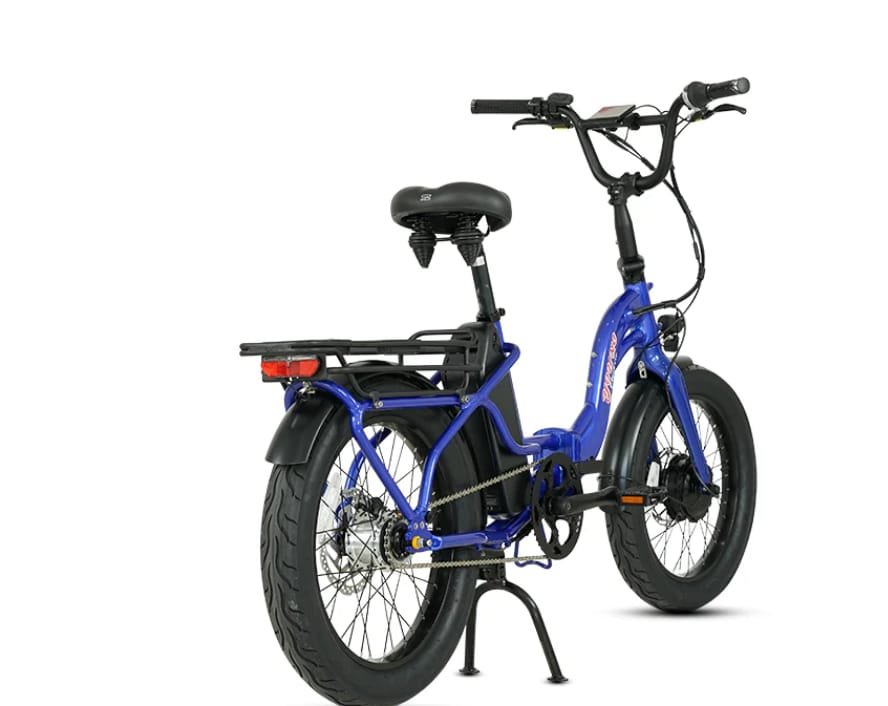In the event of a disaster, rapid and efficient relief efforts are essential. Often, however, traffic and road conditions in the affected areas can be severely affected, hindering the quick arrival of rescue workers. To address this challenge, a new generation of tools and technologies is emerging, including Fat Tire e-bikes, which demonstrate incredible efficiency and flexibility in disaster relief.
Fat Tire electric bicycles, with their unique design and functions, play a key role in disaster relief. One of their features is their wide tires, which allow them to drive in a variety of harsh terrains and environments, such as muddy roads, the remains of collapsed buildings, and flooded areas. This remarkable resilience allows rescue workers to travel through normally hard-to-reach areas, quickly reach the core of the disaster zone and deliver much-needed assistance.
In addition, Fat Tire electric bicycles also have excellent carrying capacity and durability. They are usually equipped with a rugged frame and high-performance battery system that can withstand long periods of use and various environmental tests. This allows rescuers to carry vital supplies and equipment, such as food, medicine, medical equipment, and communications equipment, to ensure timely support and relief for residents in the affected areas.
In addition to the transport of supplies, the Fat Tire e-bike can also be used for search and rescue missions. They can quickly traverse city streets and suburban areas, searching stranded people and providing emergency relief. Moreover, e-bikes are quieter than traditional motorcycles or cars, which helps to reduce panic and chaos and improve the efficiency and safety of rescue operations.
Communication is also crucial in disaster relief, and the Fat Tire e-bike’s ability to be equipped with communication equipment makes it a powerful communication tool. Rescuers can use these devices to stay in touch with command centers and other rescue teams, share information in a timely manner, coordinate operations, and mobilize additional resources to respond to disasters.
In addition to being a rescue tool, Fat Tire e-bikes can also play a role in the post-disaster reconstruction phase. They can be used to monitor conditions in disaster areas, transport reconstruction materials and equipment, and provide temporary transportation for affected residents to help them rebuild their lives.
However, to fully leverage the role of Fat Tire e-bikes in disaster relief, there are still some challenges that need to be addressed. For example, effective training programs need to be established to ensure that rescuers can operate these vehicles proficiently and understand how they can best be applied in different situations. In addition, policies and regulations are needed to ensure that these vehicles can be put into service quickly in an emergency and that their safety and reliability are guaranteed.
Of course, let’s further explore the application of Fat Tire electric bicycles in disaster relief, as well as their special role in different types of disasters.
Responding to natural disasters:
During natural disasters such as earthquakes, hurricanes, typhoons, etc., roads may be damaged, blocked, or flooded, and traditional vehicles may be impassable. The Fat Tire e-bike’s large tires and off-road performance allow it to traverse these obstacles, reach disaster areas quickly, and deliver much-needed relief supplies and medical equipment.
Applications in mountainous and remote areas:
In remote areas or mountainous areas, there is often a lack of suitable transportation for rescue. The Fat Tire e-bike can easily traverse rough terrain, providing a fast and flexible way for rescuers to reach disaster areas and launch rescue operations.
Applications in hazardous environments:
In dangerous environments such as fires and chemical spills, traditional means of transportation may be limited. Because Fat Tire e-bikes require no fuel and are less noisy, they are more suitable in these environments and can help rescue workers quickly enter and perform their tasks without increasing danger.
Coping with traffic jams:
In the event of an urban disaster or traffic jam, the Fat Tire e-bike can traverse narrow laneways and crowded streets, providing rescue workers with a fast, flexible means of transportation and the ability to deliver much-needed supplies on short notice.
Long-term rescue and recovery phase applications:
In the long-term rescue and reconstruction phase after a disaster, the Fat Tire e-bike can be used for patrolling, monitoring the situation in the disaster area, and providing temporary transportation for the affected residents. In addition, they can also be used to transport supplies and equipment needed for reconstruction, facilitating the smooth progress of post-disaster reconstruction.
In general, Fat Tire electric bicycles, as a new type of rescue tool, have shown great potential in disaster relief. Their flexibility, adaptability and versatility make them an important tool for addressing disaster challenges, providing a fast, efficient and reliable mode of transport for aid workers, helping them save lives and deliver assistance at critical times. With the continuous development and innovation of technology, it is believed that Fat Tire electric bicycles will play an increasingly important role in the field of disaster relief in the future.
